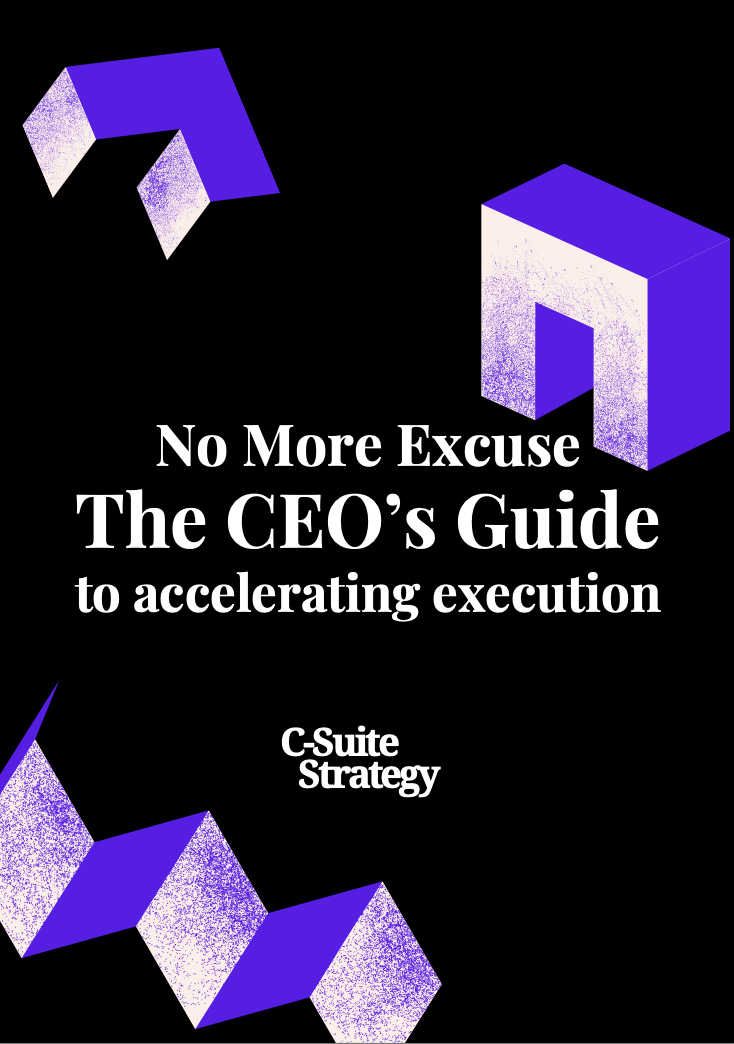Understanding the Role of the CMO in Business Strategy
CMO's Vital Contribution to Strategy
In the world of business, the Chief Marketing Officer (CMO) plays an invaluable role. Far from being just a marketing champion, they dive into strategic planning and shed light on consumer behavior trends, which are crucial to shaping a company's future. When the CMO's insights are woven into the larger strategy, the outcomes are quite dynamic.
Data-driven decisions are the order of the day. In this tech-savvy era, CMOs harness the power of analytics to predict market trends and consumer preferences. It’s not just about sales; it’s about creating a strategy that resonates with consumers on a personal level, generating growth and a loyal customer base.
One standout story is Netflix’s rise. Their marketing team, led by influential CMOs, used data to understand viewer habits, resulting in highly tailored content. This strategy not only cemented their place as a leading streaming giant but also drastically increased user engagement and retention. These tactics underscore how the CMO's role is anything but secondary; it’s fundamental.
For enterprises aiming for that edge in competition, integrating the insights of a CMO is not just advisable; it’s essential. For a deeper dive into the critical role a CMO plays in shaping business strategy, explore our CMO insights for business strategy resource.
Integrating CMO Insights into Strategic Planning
Bringing CMO Insights to the Table
When it comes to strategic planning, the Chief Marketing Officer (CMO) holds a treasure trove of insights that can be a game-changer for businesses. The CMO isn't just about advertising campaigns or brand management; they are the voice of the customer, and their insights can steer the company towards growth and innovation. By integrating their expertise into strategic discussions, businesses can make more informed decisions that resonate with their target audience.
Breaking Down Silos for Better Collaboration
One of the biggest hurdles in integrating CMO insights is the silo mentality that exists in many organizations. Marketing, sales, and operations often operate independently, which can lead to missed opportunities. Encouraging cross-departmental collaboration can help break down these barriers, allowing the CMO's insights to be woven into the fabric of the company's strategic plans. This collaboration ensures that marketing strategies align with business goals, creating a unified approach that drives success.
Utilizing Technology to Enhance Insights
Incorporating technology can amplify the CMO's impact on strategic planning. Tools like data analytics and customer relationship management (CRM) systems provide valuable data that can be analyzed to predict trends and customer behavior. This data-driven approach enables the CMO to offer actionable insights that can guide strategic decisions, ensuring that the company stays ahead of the competition. For more on how to unlock CMO insights for strategic leadership, check out this resource.
Real-World Example: A Retail Giant's Success Story
Consider a leading retail company that faced declining sales. By bringing the CMO into strategic meetings, the company was able to identify a disconnect between their product offerings and customer expectations. The CMO's insights led to a revamped product line and a targeted marketing campaign that resonated with customers, ultimately reversing the sales decline. This example highlights the power of integrating CMO insights into strategic planning.
Leveraging Data-Driven Marketing for Strategic Advantage
Making Sense of Marketing Data
In the age where data is king, leveraging marketing data can be a game-changer for strategic advantage. The CMO's role is pivotal in transforming raw data into actionable insights that can drive business decisions. Imagine having a treasure trove of customer behaviors, preferences, and trends at your fingertips. But the challenge lies in interpreting this data effectively and aligning it with the company's goals.
Real-Life Application
Consider a retail company that noticed a decline in customer engagement. The CMO, armed with data analytics, identified a shift in customer preference towards online shopping. By reallocating resources to enhance the online shopping experience, the company not only retained its customer base but also increased sales. This example highlights how data-driven marketing strategies can directly impact business success.
Collaboration Across Departments
Integrating CMO insights into strategic planning requires collaboration across departments. For instance, working closely with the Chief Commercial Officer can help in aligning marketing strategies with sales objectives. This collaboration ensures that marketing efforts are not operating in a silo but are part of a cohesive strategy that supports the overall business objectives. For more on aligning strategic insights, check out this article.
Tools and Technologies
Investing in the right tools and technologies is crucial for a CMO to harness the full potential of data. Advanced analytics platforms, AI, and machine learning can provide deeper insights into customer behavior and market trends. These technologies enable CMOs to make informed decisions and predict future market movements, giving the company a competitive edge.
Trust in Data-Driven Decisions
Building trust in data-driven decisions is essential. Stakeholders need to see the value in these insights and understand how they contribute to the company's success. Regularly communicating the impact of marketing strategies on business outcomes can foster trust and encourage a data-centric culture within the organization. For more insights on strategic planning, visit this resource.
Aligning Marketing Goals with Business Objectives
Bringing Marketing and Business Goals Together
Aligning marketing goals with business objectives isn't just a checkbox on a strategic plan; it's about making sure everyone is rowing in the same direction. When marketing and business objectives are in sync, the whole company benefits. It's like a band playing in harmony rather than a bunch of solo acts. This alignment ensures that marketing efforts not only attract customers but also drive the business forward.
CMOs have a unique vantage point, seeing both the forest and the trees. They understand customer behavior and market trends, which are crucial for setting realistic business goals. By sharing these insights with the rest of the C-suite, CMOs can help create a unified strategy that resonates with both the market and the company's aspirations.
Real-Life Success Stories
Consider a company like Nike. Their marketing isn't just about selling shoes; it's about selling a lifestyle. Their campaigns align perfectly with their business goals of not just being a sportswear brand but a leader in the industry. This alignment has been a key factor in their global success.
Another example is Apple. Their marketing strategies are closely tied to their business objectives of innovation and premium branding. Every product launch is not just a new gadget but a reinforcement of their brand's core values.
Practical Steps for CMOs
- Communicate Regularly: Keep an open line of communication with other departments to ensure marketing strategies align with overall business goals.
- Set Clear Metrics: Define what success looks like for both marketing and business objectives. This helps in measuring progress and making necessary adjustments.
- Stay Customer-Centric: Always keep the customer at the center of your strategies. Their needs should guide both marketing and business objectives.
Aligning marketing and business goals is not just a strategy but a necessity for companies aiming for sustainable growth. It's about creating a synergy that propels the company forward, ensuring that every marketing dollar spent contributes to the bigger picture.














